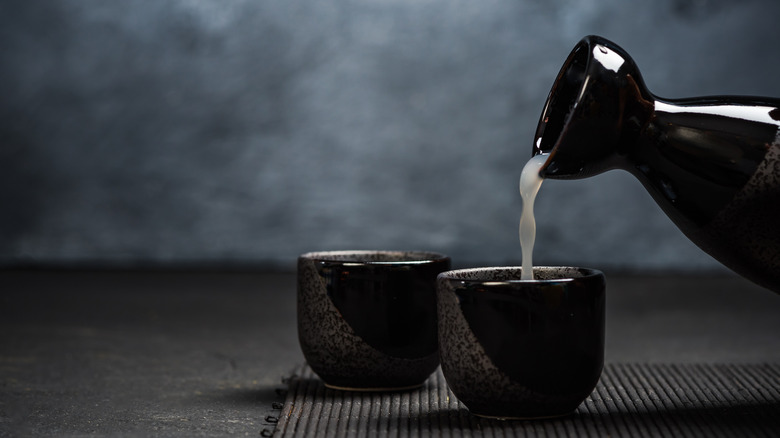Myths You Should Stop Believing About Sake
You may be familiar with sake and consider the rice-based beverage to be a type of rice wine. But, actually, that's not the case. Here, we'll be debunking a few common myths such as this one and shine some light on the drink that's currently booming in popularity.
While sake does have an alcohol content that's just slightly higher than an average wine — hovering around 15 to 16 percent, according to Tengu Sake — the booze actually has more in common with beer. When making sake, rice is processed in the way grains are when making beer, which transforms starch into alcohol, explains Mental Floss. If sake were indeed a rice wine, it would instead be fermented the way grape wines are.
One thing it does have in common with traditional wine, says Tengu Sake, is the way it is meant to be consumed. The beverage is meant to be "sipped and savored," according to the site. But of course, imbibers can enjoy the drink however they like (hello, sake bombs).
Other misconceptions about sake
Another common misconception about sake is that the temperature it's offered at denotes the quality. Eater explains that a truly low-quality sake will taste like, well, a low-quality sake, whether it is piping hot or icy cold. The same goes for top-shelf versions of the drink, which will carry their quality no matter what temperature they are served. In fact, says Tengu Sake, there are actually nine temperature variations that sake is traditionally served, ranging from or 32 degrees to 131 degrees Fahrenheit.
If you're saving sake to pair with sushi alone, you're missing out. Eater says that it's not uncommon, especially for Americans, to confuse the drink as an exclusive partner to raw fish. In fact, sake pairs well with many different dishes. Luxeat notes that this is another place sake differs from wine, which can often compete with flavors in a meal if not paired correctly. Sake's flavor profile can enhance a spicy, bitter, or sour plate just as well as a light or sweet dish, says Luxeat.
No matter what's for dinner, enjoy sake at whatever temperature you wish and try it for yourself.

